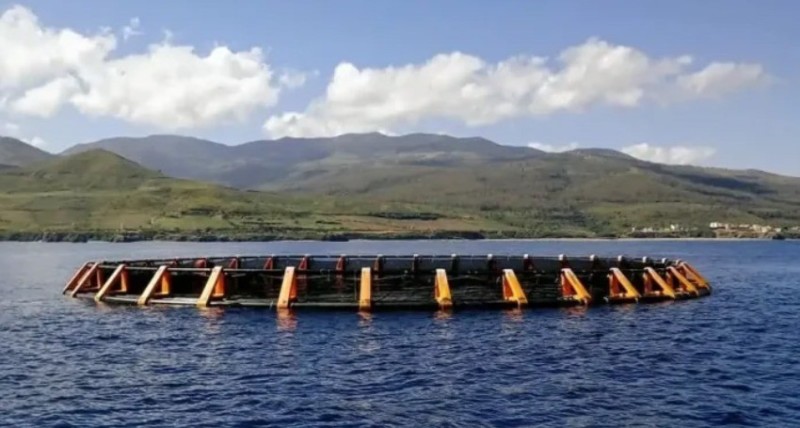The oceans, true lungs of our planet, harbor an exceptional diversity of life, but their balance is severely threatened. According to the latest assessment of the Red List of the International Union for Conservation of Nature (IUCN), over 1,550 of the 17,903 assessed marine species are currently at risk of extinction, nearly 9% of the total. Among them, some are classified as critically endangered, such as reef-building corals or iconic marine mammals. These figures reflect the growing anthropogenic pressures such as overfishing, pollution, and the impacts of climate change, which affect at least 41% of endangered marine species.
Since 1970, marine species populations have decreased by an average of 56%, an alarming observation that reflects the fragility of marine ecosystems in the face of human activities, according to WWF France. Furthermore, 44% of reef-building corals, essential for marine biodiversity and coastal protection, are threatened with extinction. Such a situation could have dramatic repercussions for hundreds of millions of people living in coastal areas, according to the IUCN. Abalone, also essential to ecosystems and fishing, suffer from the combined effects of poaching, marine heatwaves, and pollution, leading to the listing of 20 out of the 54 species recorded on the Red List. In this worrying context, let us explore five iconic species critically endangered.
The leatherback sea turtle, the largest sea turtle in the world, is an extraordinary traveler capable of covering thousands of kilometers between tropical and temperate waters. Feeding primarily on jellyfish, it plays a crucial role in controlling these marine populations. Yet, this species is now critically endangered. The ingestion of plastic bags, often confused with its prey, is one of the major causes of mortality. In addition, the destruction of nesting beaches, often replaced by coastal infrastructures, and accidental captures in industrial fishing nets contribute to the problem. Without drastic measures to reduce pollution and protect nesting sites, this iconic species may disappear forever.
The dugong, nicknamed the « sea cow, » is a fascinating mammal that depends exclusively on underwater meadows for its sustenance. Once abundant in the shallow waters of the Indo-Pacific, it is now classified as endangered due to habitat loss. Coastal water pollution, coastal development, and collisions with motorboats represent major threats. In some regions, such as Thailand or India, populations have almost disappeared. The impact of climate change on seagrass meadows, coupled with illegal hunting still practiced in some areas, further complicates the situation. These combined pressures are driving this iconic species ever closer to extinction.
The vaquita: a mammal on the brink of extinction
The vaquita, a small porpoise endemic to the Gulf of California, is one of the rarest marine mammals in the world. With a population estimated at fewer than ten individuals, it is critically endangered. The gillnets used to capture the totoaba, a fish prized for its swim bladder, are the primary cause of its decline. Although these nets are prohibited, poaching persists, fueled by a lucrative black market. Conservation efforts, though intensified, are struggling to reverse this trend, highlighting the complexity of protecting a species when economic and criminal interests come into play.
The great white shark: balance at risk
The great white shark is one of the key predators of marine ecosystems, regulating populations of other species to maintain a vital balance. However, this crucial role is threatened by human activities. Finning, particularly in Asia, has decimated its populations: these sharks are often captured, mutilated, and then thrown back into the sea. In parallel, overfishing and accidental captures in industrial nets compromise their survival. With slow reproductive cycles and fragmented populations, the decline of the great white shark disrupts the entire ecosystems it inhabits, serving as a warning sign for the future of marine biodiversity.
The Irrawaddy dolphin: an ambassador of distressed tropical waters
The Irrawaddy dolphin, with its rounded forehead and poorly defined beak, is an iconic species of freshwater and coastal waters in Southeast Asia. This cetacean plays a crucial role in the riverine and marine ecosystems it inhabits, particularly in areas like the Mekong, the Irrawaddy delta, and the coastal waters of the Bay of Bengal. Yet, this symbol of biodiversity is severely threatened, with a population estimated at fewer than 100 individuals in key areas, such as the Mekong. Irrawaddy dolphins face numerous pressures: gillnets used by local fishermen cause deadly accidental captures, while the degradation of river ecosystems caused by hydroelectric dams fragments their habitat. Additionally, pollution, heavy river traffic, and overfishing of local resources complicate their survival. In certain areas, the rapid decline of populations makes their extinction almost inevitable if concrete actions are not taken. Their critical situation embodies the larger challenge of preserving marine species in environments increasingly disturbed by humans.
Protecting marine life: a collective challenge
These species are just the tip of the iceberg. Each disappearance further weakens marine ecosystems and, by extension, the planet’s balance. Initiatives exist to reverse the trend, such as the creation of marine protected areas or the fight against plastic pollution. However, there is still a long way to go. Adopting responsible consumption, supporting NGOs, and respecting the oceans are actions that, taken together, can make an impact. Because saving marine animals is also safeguarding our future.
The oceans are at a critical point. Protecting these iconic species is about preserving the health of marine ecosystems as a whole. In the face of urgency, every action counts, whether it is raising awareness, strengthening marine protected areas, or rethinking our global economic practices.
Source: figaronautisme


